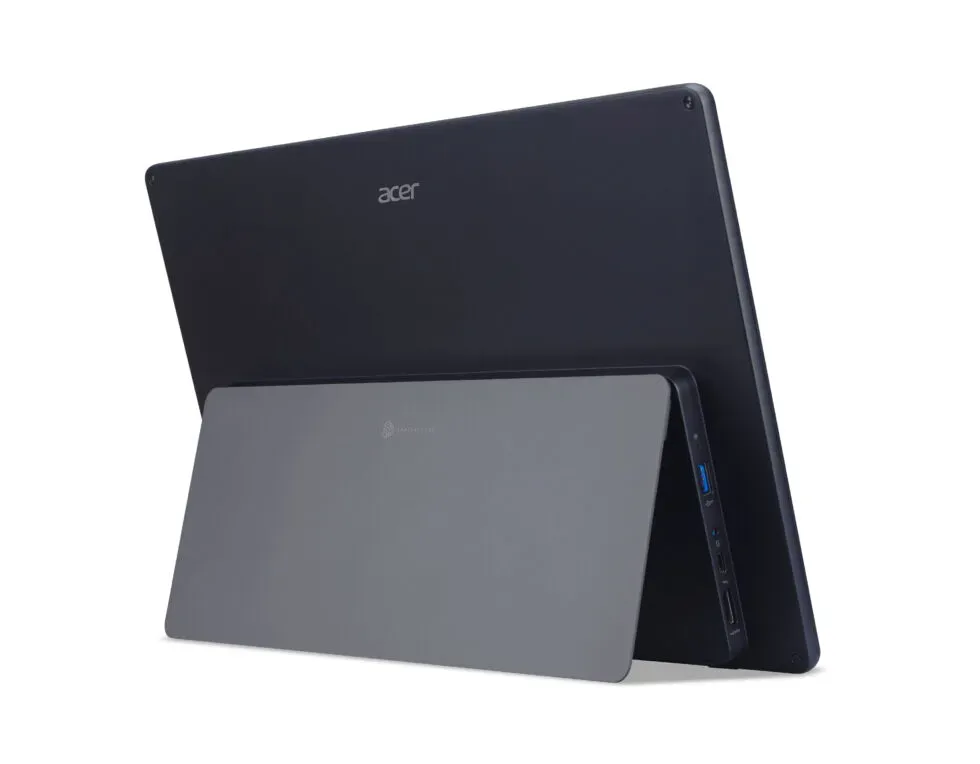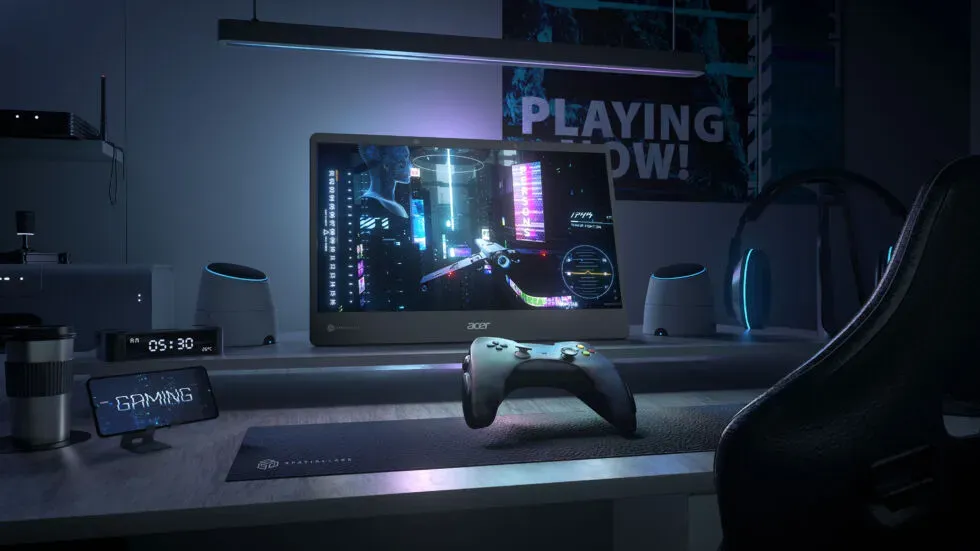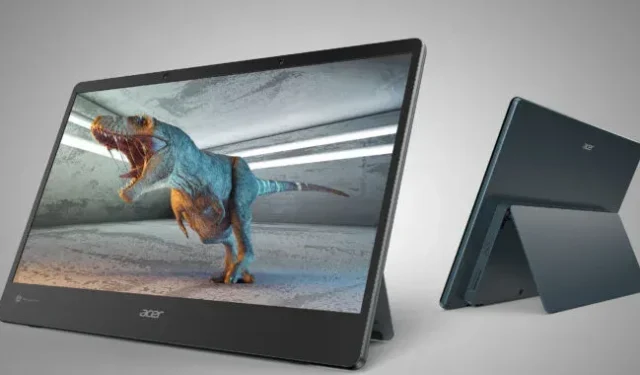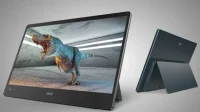Good portable monitors enhance your computer experience by giving you more screen real estate. But the two portable 4K monitors announced today, the Acer SpatialLabs View and SpatialLabs View Pro, have a trick up their sleeve: content looks like it’s coming off the screen. Using Acer’s proprietary SpatialLabs hardware/software solution, the monitors can convert 2D content such as supported games, photos, and CAD projects to stereoscopic 3D.
Certified by Adobe and Autodesk, SpatialLabs uses a specialized optical lens, two eye-tracking cameras and AI to make 2D work look like 3D without annoying glasses or other clunky headgear. SpatialLabs works by creating a set of images for each eye and projecting them through an optical lens to where you are looking.
Acer’s idea is that creators such as CAD designers, 3D animators and developers can quickly see how their work looks in 3D. The stereoscopic 3D environment does not require time-consuming rendering, so it can provide a useful and more immersive way to preview your work.
Acer introduced SpatialLabs in its ConceptD 7 SpatialLabs Edition laptop in October and is now bringing it to 15.6-inch entertainment and work-focused portable monitors. Today, the company also announced a gaming laptop with this technology.

The personal-use SpatialLabs View monitor claims to support supported games in stereoscopic 3D on the new SpatialLabs TrueGame platform.
Games in stereo 3D

“This is possible because games are basically built with three dimensions in mind: developers include depth information in every scene and object they create. SpatialLabs uses this already existing information to present games in stereoscopic 3D,” Acer said in a statement.
Acer said that TrueGame will support more than 50 games upon release, including BioShock Infinite, Borderlands 2, Forza Horizon 4 and 5, God of War, No Man’s Sky, The Witcher 3: Wild Hunt, and Tiny Tina’s Wonderland. You can see the full list of games here. TrueGame will provide pre-configured 3D profiles for each game that will automatically launch when you play a supported game. An Acer spokesperson stated that “every month”more games will be added.
So what’s the use of making game graphics look like they’re appearing on a 15.6-inch screen? According to Acer, you can expect larger rooms and objects that “feel really layered”. We’ll have to see it in person before passing judgment, but we’re curious about how the effect might affect a fast-paced action. The SpatialLabs View is also a smaller, high pixel density display (282.4ppi) with a 60Hz refresh rate and up to 30ms response time, making it much slower than affordable 360Hz gaming monitors and laptops.
SpatialLabs also has the ability to generate a simulated stereo 3D image from 2D photos and videos, including online YouTube videos.
Additional 3D screen for creators
The SpatialLabs View Pro is more like the ConceptD 7 SpatialLabs Edition laptop in that it is designed for creative professionals. Acer said the portable monitor supports “all major file formats”including OBJ, FBX, STEP, STL, COLLADA, IGES, glTF, 3DS, BLEND, PLY, DAE, IGS and Datasmith, allowing for 3D design software, such as Cinema. 4D, Revit and SolidWorks.
The monitor also works with the SpatialLabs Model Viewer, which lets you bring images, models, and animations from 3D software and view them in stereoscopic 3D. And if you’re using Autodesk Maya or Blender, you can edit on a normal screen in 2D and view those changes in real time in stereoscopic 3D on a portable monitor. Integration with 3D modeling platform Sketchfab to download additional 3D assets could also help Acer incentivize more use cases.
Acer also sees the SpatialLabs View Pro attract customers to kiosks and point-of-sale displays by equipping it with a VESA mount, hand gesture recognition and up to 5 hours of battery life.

When you’re not using the 3D features of future displays, they are regular 4K IPS panels. They claim a maximum brightness of 323 nits, which would be sufficient for a portable monitor, 100 percent coverage of the Adobe RGB color space, and a contrast ratio of 1200:1.
Move the needle?
When Acer announced it in the fall, SpatialLabs was a niche application, and that’s how it has remained. But these monitors can move the arrow a bit – at least more than a laptop.
First, they must be noticeably cheaper than a SpatialLabs laptop. Acer hasn’t revealed a price for future monitors, but PCs are selling outside the US for £3,500 / €4,000 (about $4,366 / $4,216).
Portable monitors are also a more affordable route to stereoscopic 3D than investing in a computer. Of course, portable monitors assume you already have the computing power to drive your 3D applications and SpatialLabs. Acer says it recommends the following CPUs and GPUs for SpaitalLabs:
- Desktops: Intel Core i7 or higher / RTX 2080 or higher
- Laptops: Intel Core i7 or higher / RTX 3070 TI or higher
It remains to be seen if SpatialLabs can work with games in a way that looks good, doesn’t interfere with gameplay, and doesn’t cause nausea. Competitive gamers will opt for something with a higher refresh rate, but it’s also hard to imagine more casual gamers flocking to SpatialLabs View for stereoscopic 3D gaming. That’s especially true given that “this summer”the SpatialLabs View will cost a lot more than most desktop-sized gaming monitors at $1,099.
Having a second screen dedicated to the 3D experience feels more natural to creators and developers already working in the space, especially if it’s executed well. But dealing with a smaller screen and finding the right application is a major hurdle for professionals. Creatives may also be hesitant to become dependent on a few new technologies for critical work.
Acer hasn’t revealed a price or release date for SpatialLabs View Pro.
Editor’s note: This article has been updated with Acer’s specification guidelines.


